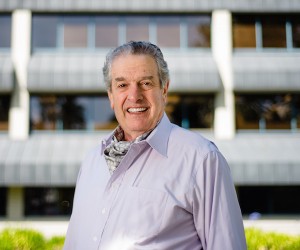
Andy Hagans sits down for an interview with Charles Biderman to discuss valuation metrics, FCFI, and more.
ETF Reference editor in chief Andy Hagans recently interviewed Charles Biderman, chairman and portfolio manager at TrimTabs Asset Management. TrimTabs is an institutional research firm focused on stock market liquidity. The interview was completed over email, in June of this year.
Andy Hagans: TrimTabs recently launched the first international ETF based on free cash flow yields (FCFI). What is the research behind its investment thesis?
Charles Biderman: The purpose of any business is to generate free cash flow. Indeed, free cash flow is the only metric that in the past has consistently outperformed the overall market. Not earnings per share, not revenues, not riches for insiders.
Andy Hagans: FCFI holds mainly developed foreign countries’ equities. I’d argue that the argument for looking at free cash flow, is even stronger in emerging markets — given these markets’ opacity, and relatively unreliable accounting figures. Does the importance of the free cash flow metric change relative to a given country’s development status? Do you think there’s space for additional funds covering less-developed foreign markets?

Charles Biderman, founder of TrimTabs
Charles Biderman: While there are excellent companies growing free cash flow quite rapidly in the emerging world, unfortunately there are not enough of them big enough for a global ETF to trade. In the future, some of these emerging markets will mature to where we can consider either adding them or creating a new vehicle.
Andy Hagans: FCFI could be described as “smart beta squared”: it holds certain stocks based on the free cash flow yield metric, and the fund is equal weighted, as well. The low hanging fruit in the smart beta space seemed to be equal weighting, applied in different ways; now we’re starting to see ETFs with novel takes on smart beta, more complex permutations on equal weighting, etc. Which of the new smart beta trends do you see gaining momentum?
Charles Biderman: The problem I have with the various trends is that at best, these funds might perform as well as the overall market. Yes, equal weight S&P 500 has outperformed the S&P 500 recently, but not during all market cycles. On the other hand free cash flow has a better long-term history than any beta or equal weight strategy I know.
That said, FCFI is not actually equal weighted. Currently the fund consists of 10 countries, each with 10 percent holding. FCFI currently includes 48 Canadian companies, each weighted at 0.21 percent, and there are 33 Korean companies listed. On the other hand there are only four Swiss outfits, each at 2.5 percent.
Andy Hagans: Most of the financial media and many investors still rely heavily on P/E ratios as a primary valuation metric. I’m guessing you see that metric as having some major limitations; what would your advice be to someone who utilizes P/E as one of the key considerations when evaluating a stock?
Charles Biderman: Price earnings ratio has never predicted near term future market activity. In fact, I argue that PE grows or shrinks based upon changes in supply and demand of shares of stock and the money available to buy them.
Andy Hagans: The focus on free cash flow yields would seemingly result in some tilts within a portfolio — specifically toward value stocks and away from higher growth sectors of the economy, such as tech and biotech (where many companies do not generate much if any positive FCF). Is there a concern that underweighting these sectors could remove some of the long-term growth potential from a portfolio?
Charles Biderman: As I said above, rapid growth is great only if it results in free cash flow. Many rapidly growers flame out well before they pay off. Apple is growing rapidly and generating lots of free cash flow. Sooner or later the good companies become cash flow generators well before they stop growing.
About the Author: Andy Hagans
Andy Hagans is editor in chief for ETF Reference, and also serves as CEO of parent company Poseidon Financial. He is passionate about the “Bogleheads” school of investing, and is focused on helping investors achieve higher net returns via tax efficiency and fee minimization. He resides in southwest Michigan.
Comments